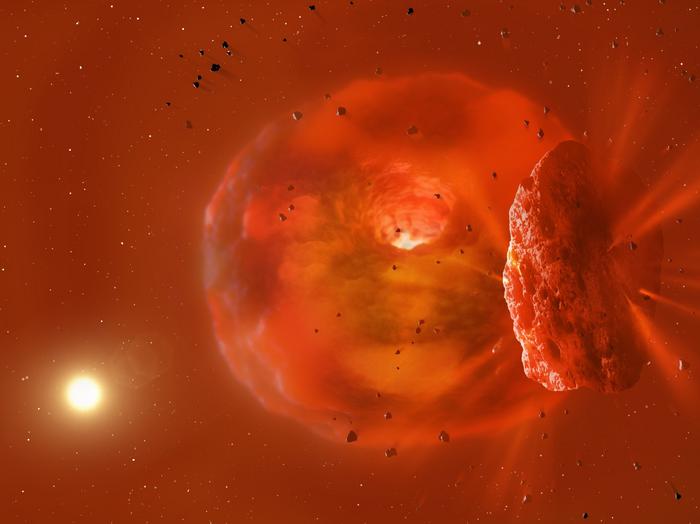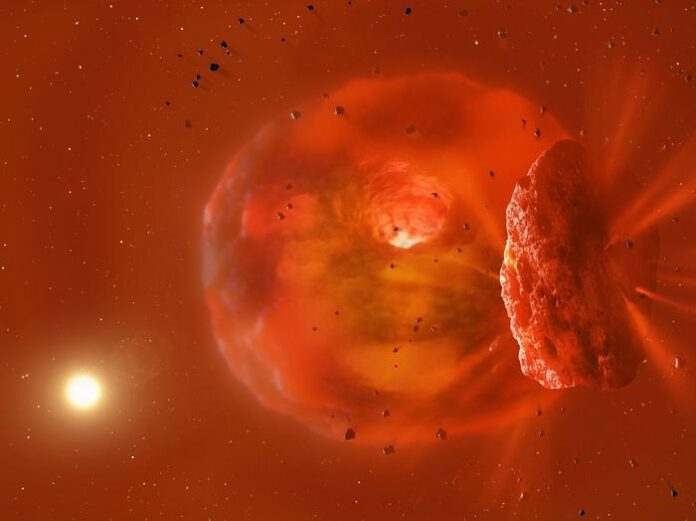
Enlarge / Artist's conception of what the post-collision body of material might look like. (credit: MARK GARLICK)
Planet formation is thought to be a messy process, as lots of growing planets end up in unstable orbits, resulting in large collisions like the one that resulted in the Moon's formation. The messiness may not end there, as many exosolar systems have indications that their planets migrated after their formation, creating the potential for further collisions. Again, there are indications that a similar thing happened in our own Solar System, as Jupiter and Saturn seem to have moved around before reaching their present orbits.
All the evidence for these collisions, however, is indirect or the product of modeling. Planetary migrations are too slow for us to track them, and we can't image planets that are close enough to their stars for collisions to be likely.
But a large team of scientists now think they have evidence of a smash-up of giant planets orbiting a Sun-like star. The evidence comes from a combination of two unusual events: the sudden brightening of the star at infrared wavelengths, followed over two years later by its dimming in the visual.
Read 12 remaining paragraphs | Comments
Ars Technica - All contentContinue reading/original-link]




